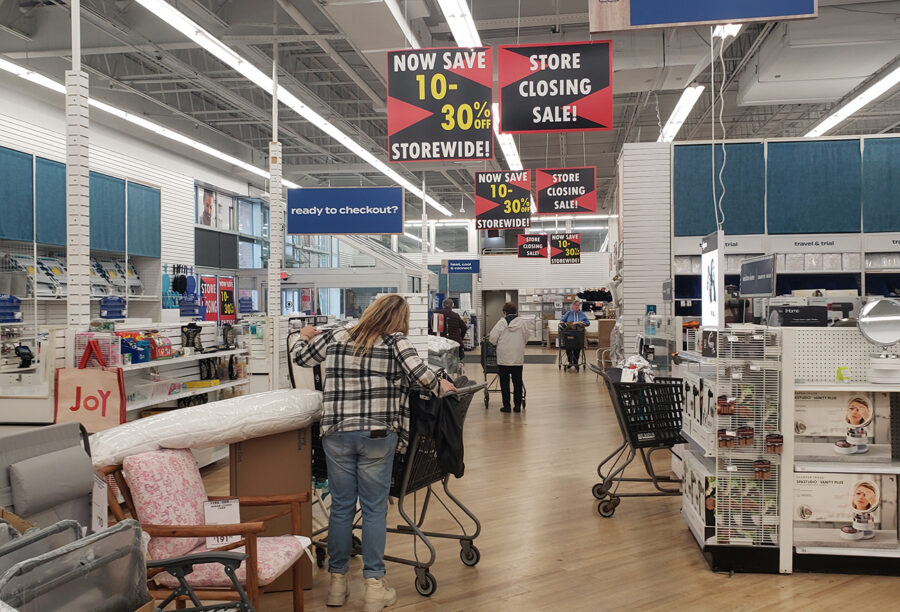Wharton marketing professor Barbara Kahn heard the death knell for Bed Bath & Beyond long before the company announced last month that it was going out of business.
After several years of poor performance and skyrocketing debt, the retailer has filed for Chapter 11 bankruptcy and will close its remaining 360 stores and 120 Buy Buy Baby locations.
It’s an inauspicious end for a 52-year-old business that became known as a category killer for its domination of the housewares market. Loyal customers once flocked to the oversized stores to roll through seemingly endless aisles of pillowcases, dinner plates, and window coverings.
But that was before the explosive growth of online shopping.
“There are a few things that predicted the beginning of the end,” Kahn said. “The growth in e-commerce and Amazon hurt the core concept. Category killers were built on the idea of large assortments at good prices, but e-commerce websites typically had larger assortments and better prices.”
By 2017, the year of the so-called retail apocalypse, many category killers were in trouble. Kahn, who is author of the book The Shopping Revolution, mentioned Circuit City and Toys R Us as examples.
“Their whole core concept of ‘killing a category’ with a magical combination of more choice, lower price was usurped by e-commerce,” she said. “Walmart and Target were much faster to recognize the importance of e-commerce, and both retailers invested in omnichannel strategies that built on their store advantages and capitalized on the convenience of e-commerce shopping.”
Marketing Mistakes and Financial Miscalculations
Bed Bath & Beyond was unfashionably late to the e-commerce gala and didn’t adapt to changing consumer behaviors, but the company also made monumental financial mistakes, Kahn said. Since 2004, it spent $11.8 billion to buy back its own shares, an amount that eclipses the $5.2 billion in debt reported in its last SEC filing. The company began borrowing money in 2014 to repurchase shares, and continued doing so through a dismal 2022 holiday season. In February, a $1 billion hedge fund deal that was a last-ditch effort to stave off bankruptcy failed to materialize.
“Category killers were built on the idea of large assortments at good prices, but e-commerce websites typically had larger assortments and better prices.”— Barbara Kahn
“In 2014, they got into the debt market by selling bonds to buy back stock. Not managing debt well has been the downfall of other retailers,” Kahn said.
Other mistakes were made, too.
In 2019, the company hired Target chief merchandising officer Mark Tritton as its new chief executive. In order to increase the retailer’s margins, Tritton began replacing higher-priced national brands with private-label brands, just like he did at Target. Kahn said that while that strategy was a winner for Target, it flopped at Bed Bath & Beyond.
“Consumers went to BBB looking for the national brands and just didn’t recognize or trust the private brands. Supply chain issues during the pandemic didn’t help,” she said. “BBB also got rid of their coupons, and using these coupons drove consumer traffic to the store. Without those coupons as a trigger to go shopping, foot traffic dropped.”
Kahn said there’s a simple marketing lesson in the failure of Bed Bath & Beyond: The strategy that makes one retailer wildly successful doesn’t necessarily transfer to another. She pointed to former Apple retail chief Ron Johnson as another example. After pioneering the popular Apple concept stores and “genius bar,” Johnson was hired by J.C. Penney in 2011 to turn its staid, unappealing stores into a shopping destination. Analysts described his efforts as “disastrous.”
“When Ron Johnson came straight out of Apple retail success to try those strategies at J.C. Penney, he failed monumentally,” Kahn said. “Here, we had a chief merchandising officer from Target come to BBB. But what worked at Target did not work well at BBB.”
Target never had coupons, but Bed Bath & Beyond’s ubiquitous coupons were a constant reminder for customers to come into the store. Those coupons — once tucked into every magazine and mailbox — became fewer under Tritton.
“While the private brand strategies and lessened reliance on couponing were no doubt designed to improve margins, they instead lowered sales,” Kahn said.
Image: 42-BRT, CC BY-SA 4.0, via Wikimedia Commons.


